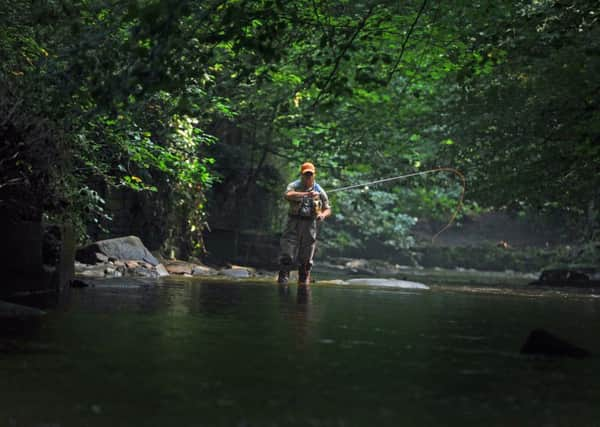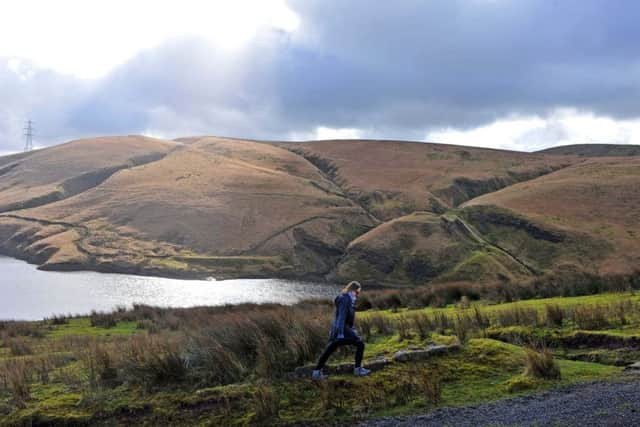Why Yorkshire's landscape needs some joined-up thinking to really thrive


‘Bigger, better, and more joined-up’. That was the clarion call of the Lawton Report when it was published in 2010, about the changes needed to make our natural environment fit for purpose in the 21st century.
Its aim was to guide Government and keep nature at the forefront of policy decisions to help prepare for climate change, and to protect the environment from ever-encroaching development and intensive agriculture. Connectivity was the theme, creating and connecting not just natural places so wildlife can freely move, but connecting people with places where they can go to experience the natural world.
Advertisement
Hide AdAdvertisement
Hide AdPublic policy can move frustratingly slowly, but there are projects now in Yorkshire coming to fruition. One is the Environment Agency’s Developing the Natural Aire (DNAire), which intends to build fish passes on four of the larger remaining weirs which will allow salmon to return to their historic spawning gravels in Gargrave.


This £1.8m Heritage Lottery-funded project is the last link in the chain that will connect the River Aire from its upper reaches to the sea. It is the culmination of years of work by many agencies, getting everything in place for the return of the salmon. The aim is for the first salmon to make it through to Gargrave by 2021.
Keith Davie is the DNAire project manager for the Environment Agency: “Once we have the salmon back we can use that to tell the world that the water quality is good, and through that drive home the message that the river is worth protecting,” says Mr Davie.
Connecting the river is not just for the benefit of salmon, though – sea trout and eels are other migratory fish that will be tempted back into the Aire, and many fish like to move up and down the river during their life cycles. The weirs will also be used as a launchpad to link with schools and universities and encourage students to study engineering and the sciences.
Advertisement
Hide AdAdvertisement
Hide Ad“We want to join it all up and have 10 focus points where communication and engagement, learning and access will coincide,” says Mr Davie. “There is a long-term ambition to create a corridor of habitats up through the Aire Valley.”


The idea of a river being a natural corridor, something that allows wildlife to move freely along it, extends beyond the water and up onto its banks. Professor Jon Grey of the Wild Trout Trust has studied extensively the way life that makes its home beside a river interacts with that in the river itself.
“There is now a growing realisation that productivity from within aquatic systems can feed back into terrestrial ecosystems,” says Prof Grey. “Like emerging riverflies, preyed upon by birds.”
Prof Grey spends a lot of time working with angling clubs in the region, encouraging them to plant trees and other native plants beside the rivers that they fish, to form a ‘buffer zone’ of vegetation between the river and what is often grazing land.
Advertisement
Hide AdAdvertisement
Hide AdThe advantages are many. A diversity of plant life encourages a diversity of insects and bird life, and a diversity of roots beneath the soil helps to stabilise the river bank and prevent erosion. The trees and plants also help to stop rainwater entering the rivers so quickly and so help to prevent flooding. The advantages of creating such a buffer zone by rivers are many – not least they create a corridor for wildlife on land as well as in the river.
“The term ‘buffer zone’ is very important,” says Prof Grey. “It is like having a big sponge at the edges of a river. It is more absorbent than the grass, it is more diverse, and it creates habitat. The trees will provide shade ultimately, and they will provide leaf litter, which is important for the life within the streams.”
Prof Grey has co-ordinated the planting of almost 4,500 trees in the region in the last four months alone, including restoring the woodland in his own tiny village of Lothersdale, and beside the beck that runs by the village. This was done with the help of the Woodland Trust, which is involved with a hugely ambitious connectivity project of its own.
The trust is involved in the creation of the Northern Forest – a forest that is planned to stretch in a broad band from Liverpool in the west to Hull in the east. It has the backing of the Government and is part of Defra’s recently published 25-year plan for the environment. “This is a £500m vision over 25 years, so this is very much just the beginning,” says Woodland Trust’s director of strategic woodland projects Simon Mageean. “That £500m will go towards planting hopefully 50m trees, and that equates to about 24k hectares of woodland across the area.”
Advertisement
Hide AdAdvertisement
Hide AdThat is an awful lot of trees, all of which will help meet clean air and carbon targets. But while it might so far have come across as a lofty Government initiative, Mageean is keen to stress that the Northern Forest is very much about linking together smaller-scale community projects.
“There will be one or two big blocks that could be forest parks potentially, but also lots of small-scale initiatives that are being driven through by our partners,” says Mageean. In the Yorkshire region, that partner is the White Rose Forest.
“That is how we see the northern forest developing. It isn’t a big top-down initiative that is being driven by either Government or any individual body, it is a coalition of like-minded people seeing the value of trees and woods in their own lives,” he says.
“So you get people in a community saying ‘actually, we would like to see some more trees planted’. That could be trees for riparian benefit, or in some cases it might just be because people want to see more trees close to their village.”
Advertisement
Hide AdAdvertisement
Hide AdAll of these projects will stand or fall on the involvement of people, and the communities they intend to serve. Connecting up the small dots that make the whole can only happen with the enthusiasm of those involved.
“We are connecting people,” says Mageean. “There is absolutely no point in planting a tree and then walking away from it. We want people engaged, wanting to see that tree flourish in that landscape. And for them and their children to see the benefits themselves.”
There can be some unlikely motivators for this energy. For many a river enthusiast it is the mysterious migratory drive of the salmon that so captivates them, romantics and scientists alike.
“I joined this agency 14 years ago, and all this stuff was a pipe-dream, it really was,” says Mr Davie.
Advertisement
Hide AdAdvertisement
Hide Ad“Now we’ve almost done the River Don, then the River Dearne, so salmon will be able to get through to Barnsley, and shortly we will have them up into central Sheffield.
“We really are getting Yorkshire rivers back.”
We live in a cynical age, but there is still some room for the stuff of dreams.
And speak to your parents or grandparents – salmon in Barnsley is still the stuff of dreams.